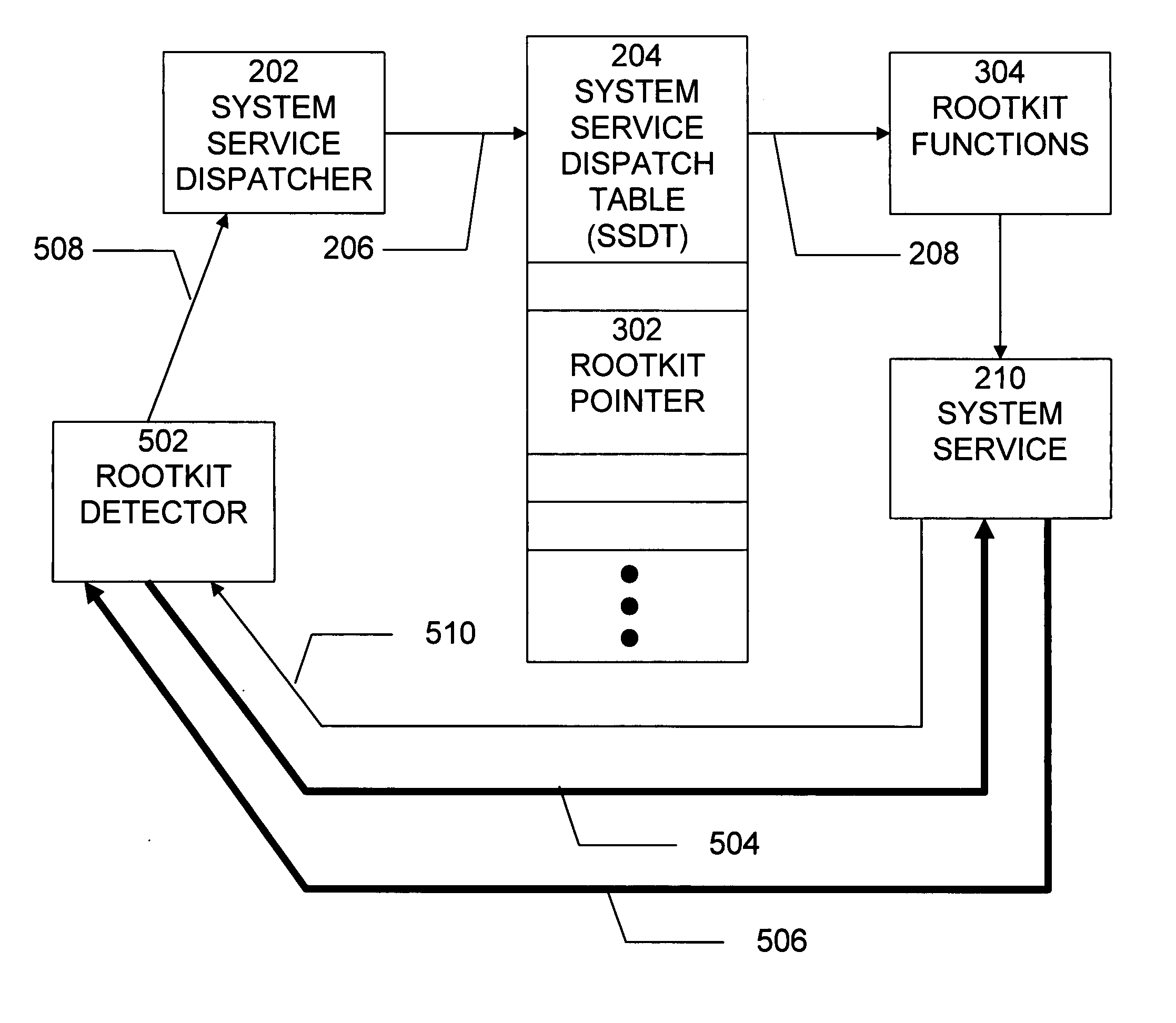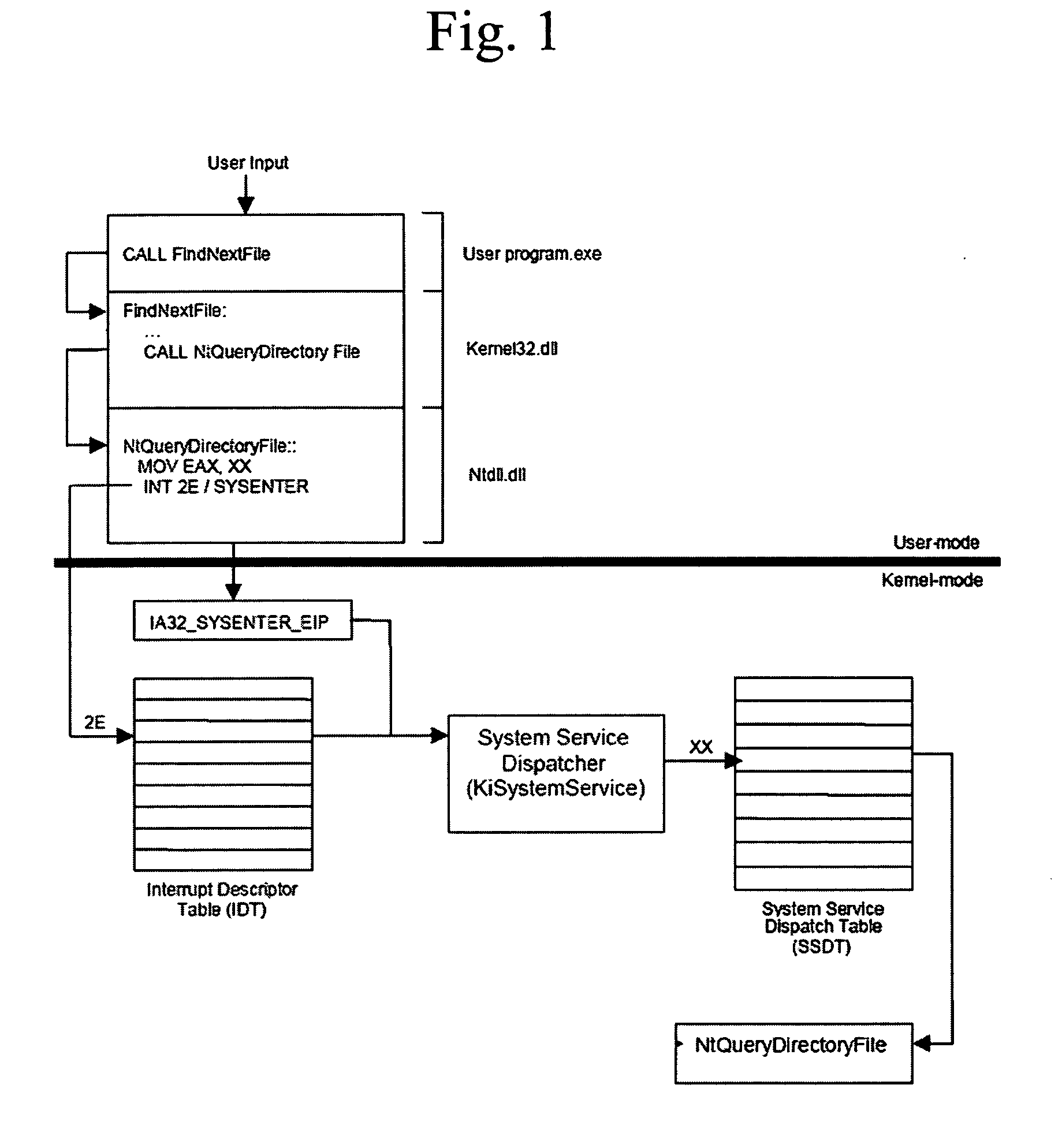Method and system for detecting windows rootkit that modifies the kernel mode system service dispatch table
a kernel mode and rootkit technology, applied in error detection/correction, unauthorized memory use protection, instruments, etc., can solve problems such as false positives, false positives, and unsatisfactory user mode processes, so as to avoid false positives and not disable security applications.
- Summary
- Abstract
- Description
- Claims
- Application Information
AI Technical Summary
Benefits of technology
Problems solved by technology
Method used
Image
Examples
Embodiment Construction
[0021]The MICROSOFT WINDOWS NT® operating system includes a hidden API that the operating system uses internally. This API, which is called the Native API, is almost entirely hidden from view, with only a handful of its function documented in generally accessible publications. The Windows NT Native API serves one purpose: as a means for calling operating system services located in kernel mode in a controlled manner. Kernel mode is where the core of NT executes, and it is in kernel mode that components have direct access to hardware and services that perform management of the computer's resources including memory, devices and processes. Thus, whenever a program executing in user mode wants to perform I / O, allocate or deallocate virtual memory, start a thread or process, or interact with global resources, it must call upon one or more services that live in kernel mode.
[0022]An example of the architecture of the MICROSOFT WINDOWS NT® operating system is shown in FIG. 1.
[0023]Kernel Mod...
PUM
 Login to View More
Login to View More Abstract
Description
Claims
Application Information
 Login to View More
Login to View More - R&D
- Intellectual Property
- Life Sciences
- Materials
- Tech Scout
- Unparalleled Data Quality
- Higher Quality Content
- 60% Fewer Hallucinations
Browse by: Latest US Patents, China's latest patents, Technical Efficacy Thesaurus, Application Domain, Technology Topic, Popular Technical Reports.
© 2025 PatSnap. All rights reserved.Legal|Privacy policy|Modern Slavery Act Transparency Statement|Sitemap|About US| Contact US: help@patsnap.com



